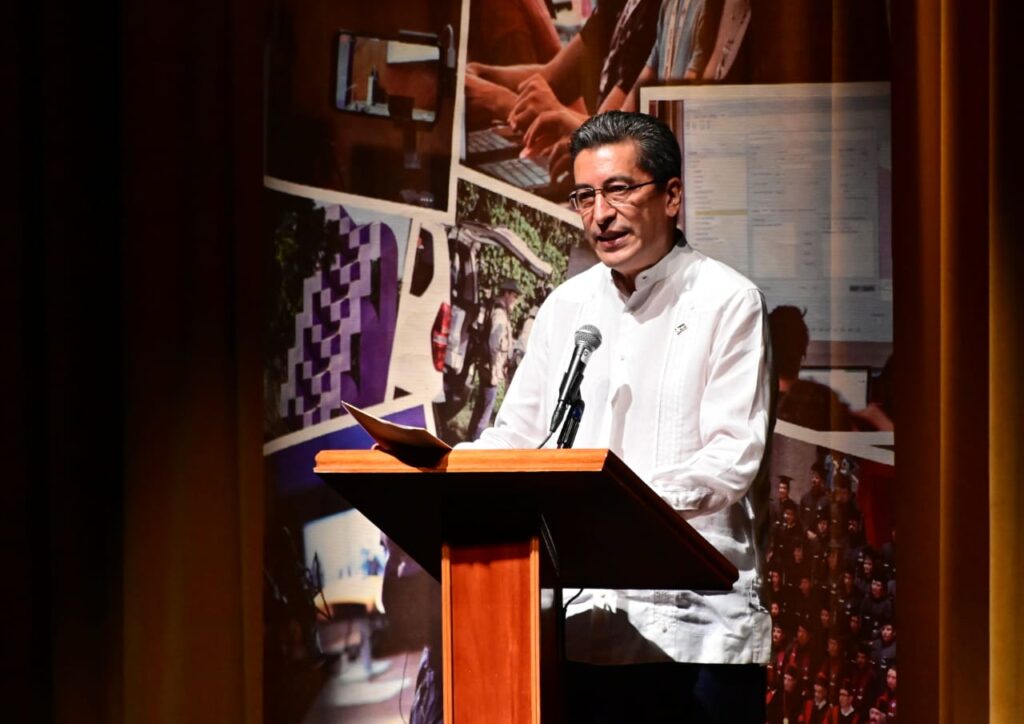Celebration of the School of Public Health Century
- In 100 years, more than 18, 000 postgraduate students have been trained in public health at ESPM
- During the last 35 years, the National Institute of Public Health (INSP) has housed ESPM
- ESPM’s history is marked by two major epidemics: influenza, at the beginning of the 20th century, and the current COVID-19
“The now Meritorious School of Public Health of Mexico (ESPM) reminds us that teaching public health is a primary public good and a sine qua non to eliminating inequity and inequality in health,” said Dr. Eduardo Lazcano Ponce, General Director of the National Institute of Public Health (INSP) during the ceremony for the ESPM Centennial celebration at the Auditorio Teopanzolco in the City of Cuernavaca.

Accompanied by Hugo López-Gatell Ramírez -Covid Czar in Mexico and undersecretary of Prevention and Health Promotion of the Minister of Health, Margarita González, General Director of the National Lottery and Rocío Bárcenas, General Director of Mexican Postal Service, Dr. Lazcano Ponce highlighted in his message that in one century ESPM has trained more than 18,000 postgraduate students in the various areas that integrate public health.
The ESPM, Dr. Lazcano noted, “has known how to transform its academic programs and nature of the learning strategies, thanks to the innovation in the pedagogical and teaching models as well as the ethical values that have been instilled in its lecture rooms over the years throughout its evolution and development.
Dr. Lazcano acknowledged that the INSP community is immersed in a process of renewal to strengthen its organizational structure in order to improve and renew capacities to create a new perspective of public health value and he explained that, just as ESPM was created at the beginning of the 20th century, on March 23, 1922, to respond to the influenza pandemic, one hundred years later the world faced an unprecedented epidemiological emergency, which tests us as a species and as a society; from our different perspectives we are an example of great capacities for resilience and adaptation.
In this sense, Dr. Lazcano issued a reassurance that the greatest threats ESPM’s academic programs may face are dispersion and fragmentation: “We can fall into the risk of teaching a fraction of a fraction. For this reason, we are convinced that we have to orient ourselves towards our roots, which constitute the essential foundations of public health and guide ethical values and principles in the practice of our discipline as an institutional commitment, and inculcate a humanistic culture oriented towards social relevance and population interventions for and with our community”.
Dr. Hugo López-Gatell Ramírez, representing the Minister of Health, Dr. Jorge Alcocer Varela, congratulated the ESPM community on its first century of existence and urged it to reflect on the role of the school in the years to come, not only as trainers of health professionals but also as a creator of large collectives. Public health, he assured, is at the center of social welfare and as such it is possible to articulate the operation of the health system.
For her part, Margarita González, National Lottery General Director, spoke about the importance of launching a commemorative ticket for the ESPM centennial, adding that 2.4 million pieces are already in circulation.
Moreover, Rocío Bárcenas, Mexican Postal Service General Director, expressed the elation that represents for Correos de México the issuance of a stamp commemorating the 100 years of the school. With a print run of 200,000 stamps, she recognized that “stamps are small works of art that fit in the palm of your hand.”
The commemorative ceremony of the centennial of the Meritorious School of Public Health of Mexico ended with the concert of the Mining Symphony Orchestra “100 years of history”.
